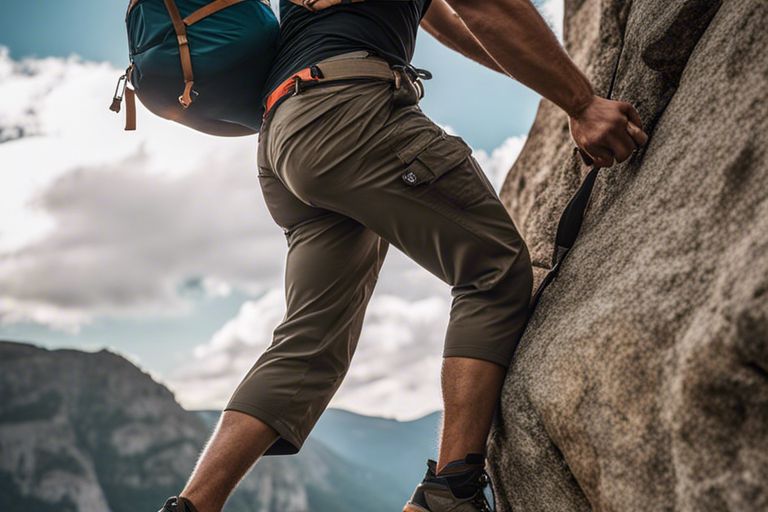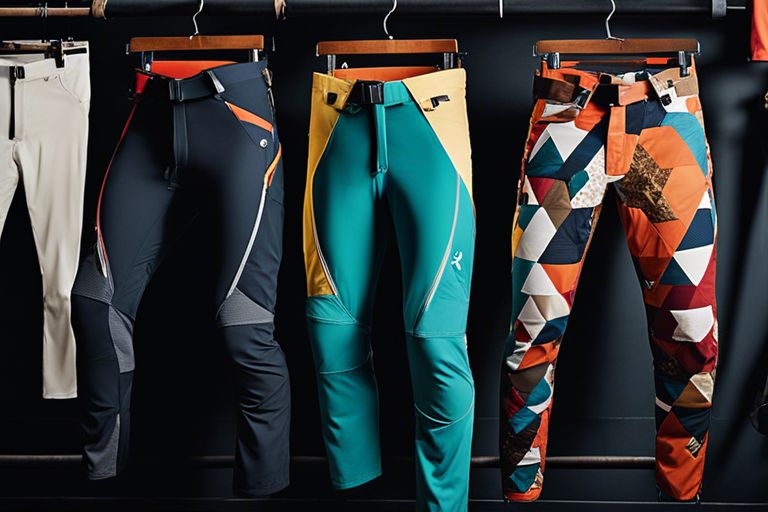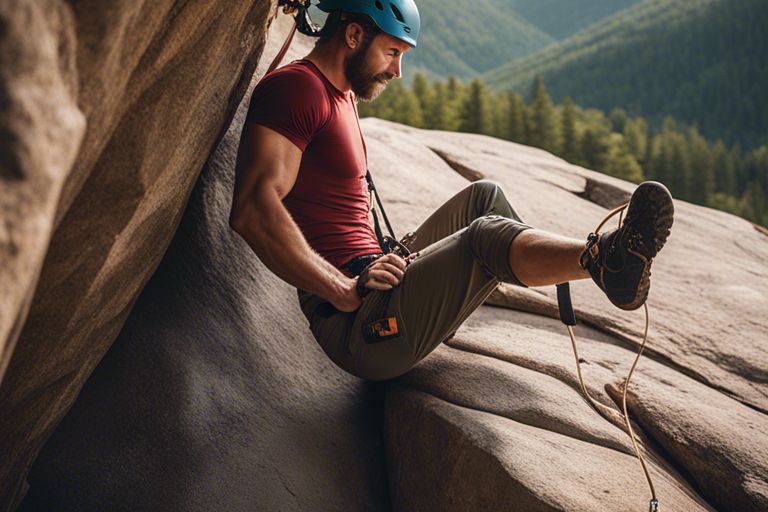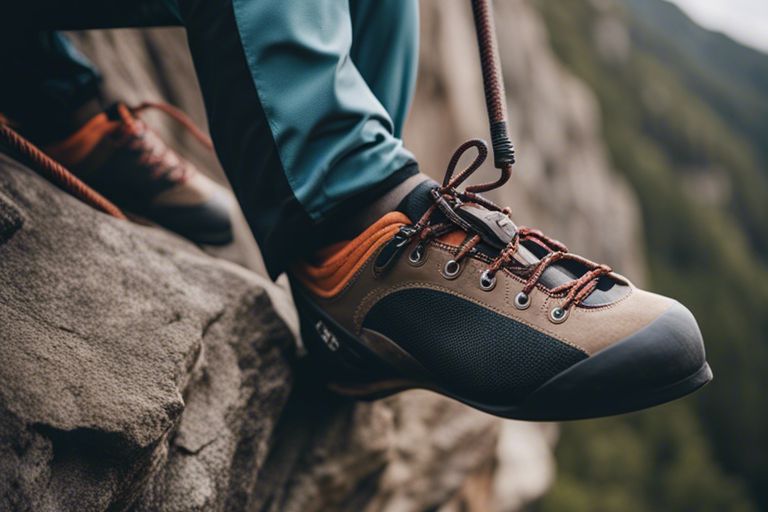Stretchy and durable pants are crucial for your rock climbing experience, as they allow for maximum mobility while offering protection against rough surfaces. Choosing the right pair can significantly enhance your performance on the rock face. From lightweight options to more heavy-duty fabrics, understanding the key features to look for will ensure you stay comfortable and focused on your ascent. In this guide, you will learn about the best materials, styles, and fit that cater specifically to the demands of climbing, helping you make an informed decision for your next adventure.
Importance of Choosing the Right Pants for Rock Climbing
A critical aspect of your climbing gear is the pants you choose to wear. The right pair can significantly enhance your climbing experience, providing comfort, safety, and the freedom of movement necessary for successful ascents. In this chapter, we will examine into several key factors to consider when selecting climbing pants, which ultimately affect your performance and enjoyment while scaling those vertical challenges.
Flexibility and Movement
An ideal pair of climbing pants should allow for a full range of movement. Whether you are stretching to reach the next hold, squatting to place gear, or maneuvering your limbs in tight spaces, you need pants that will facilitate these actions rather than restrict them. Look for materials with stretchable fabric, such as spandex or elastane blends, which will adapt to your movements while still providing a comfortable fit.
Additionally, the design of the pants should not hinder your mobility. Features like a gusseted crotch or articulated knees contribute significantly to flexibility, ensuring that the pants move with your body. As you climb, it’s important to feel unencumbered, and the right pants can provide that sense of freedom, allowing you to focus solely on the climb ahead.
Breathability and Comfort
To enjoy your climbing experience, you need pants that offer excellent breathability and comfort. Rock climbing can be an intensive workout, leading to sweat and discomfort if your clothing doesn’t manage moisture effectively. The right material should wick away sweat, providing ventilation to keep you cool during strenuous climbs. Look for pants specifically designed with moisture-wicking properties and breathable fabrics such as nylon or polyester.
Your comfort should also be a priority when choosing climbing pants. An adjustable waistband, pockets that are accessible even while wearing a harness, and soft seams can add extra layers of comfort. Opt for lightweight materials that feel great against your skin, ensuring that you can fully immerse yourself in your climbing experience without distractions.
Pants that prioritize breathability and comfort not only enhance your performance but also minimize the risk of chafing and discomfort during long climbs. Fine-tuning these details will make all the difference, allowing you to focus on the challenge ahead instead of the limitations of your gear.
Durability Against Abrasion
Breathability is just one factor to consider, but durability is equally crucial when selecting climbing pants. Climbing can expose your gear to harsh elements such as rough rock surfaces, sharp edges, and varying weather conditions. Therefore, your pants must be made of sturdy materials that resist wear and tear. Look for fabrics like Cordura or reinforced nylon that can withstand the abrasion of repeated contact with climbing surfaces.
Furthermore, features such as reinforced knees and seat areas provide extra protection in high-wear zones, helping your pants last through countless climbs. Investing in durable climbing pants means you can focus on your ascent without worrying about the longevity of your gear, allowing you to push your limits and tackle even more challenging routes.
Weather Resistance
Any climber knows that weather conditions can change rapidly, impacting not only safety but also comfort. Therefore, it’s vital to choose climbing pants that offer some level of weather resistance. Pants with water-repellent coatings can keep you dry in light rain or when you encounter wet rock faces. Similarly, wind-resistant materials can shield you from chilling gusts at high altitudes, making your climbing experience more comfortable and enjoyable.
Moreover, pants designed with weather resistance often come with breathability features, allowing for proper ventilation while still protecting you from the elements. Striking the right balance between weatherproofing and breathability ensures that you can tackle various conditions confidently.
With the right weather-resistant pants, you can climb confidently, knowing you are prepared for whatever Mother Nature throws your way. This preparedness can bolster your performance, enabling you to focus on your climbing without distraction.
Types of Pants Suitable for Rock Climbing
Little consideration goes into choosing the right pants for rock climbing, yet it is pivotal for your comfort and performance. When choosing climbing pants, you must think about mobility, breathability, and durability. Here’s a breakdown of the various types of pants suitable for your climbing adventures:
| Type of Pants | Description |
|---|---|
| Climbing Tights and Leggings | Close-fitting garments that offer excellent flexibility. |
| Softshell Pants | Water-resistant pants that balance durability and breathability. |
| Cargo Pants | Roomy pants with pockets to carry necessary gear. |
| Capris and Cropped Pants | Shorter styles providing ventilation and a range of motion. |
| Hiking Pants | Versatile options that are often lightweight and quick-drying. |
Climbing Tights and Leggings
With their form-fitting design, climbing tights and leggings allow for maximum flexibility and movement. They are made from materials that wick away sweat, ensuring you stay dry during your climbs. These types of pants are also often seamless, which can prevent uncomfortable chafing as you navigate rough terrains.
Additionally, the stretchy fabric used in tights and leggings makes them ideal for high-stretch movements, such as reaching or high steps. Be sure to choose a pair that is not too tight; you still want to ensure blood circulation and comfort throughout your climbing session.
Softshell Pants
With a material composition that combines the best of both worlds, softshell pants offer breathability and water resistance. They are ideal for changing weather conditions and tougher climbing environments. The durability of softshell fabric allows it to withstand abrasions from rock surfaces without compromising your comfort.
Moreover, softshell pants often come with added features such as articulated knees and adjustable cuffs, which enhance mobility and versatility while climbing. As you traverse different terrains, these pants keep you shielded from the elements while remaining lightweight.
Tights are not just for fashion; they are functional. They are designed with specific climbing needs in mind, such as reinforced seams and moisture-wicking technology. You can find many brands focusing on ergonomic designs to ensure the right fit and feel whether you are soloing on a boulder problem or tackling a multi-pitch route.
Cargo Pants
Rock climbing often requires carrying additional gear, so cargo pants are a favorite among climbers. These pants offer ample storage options through large side pockets, making it easy for you to take along importants without needing a bulky backpack. The extra fabric sacks can accommodate everything from climbing guides to your cell phone.
Another cell for comfort includes the loose fit which provides a breadth of movement while also being robust enough to withstand the wear and tear of climbing. Cargo pants are often made from durable, rip-resistant materials, ensuring they can endure harsh climbing conditions.
Leggings serve as a great alternative if you prefer minimal fabric. Their sleek design often makes it easy to wear them under harnesses without bunching or sliding. Factors such as quick-dry fabric and climate adaptability make leggings a solid choice for various climbing environments.
Capris and Cropped Pants
Pants that are cropped or of capri length allow you to stay cool while climbing, especially during hot days. They provide ventilation without sacrificing freedom of movement, making them an ideal choice if you’re climbing in warm weather. Their construction often incorporates stretchy fabric, enabling you to tackle both vertical and horizontal climbs seamlessly.
Moreover, the cropped length allows you to easily inspect your footwear or adjust your gear without hassle. Many climbers love this style for its balance of coverage and comfort, perfect for bouldering in warmer climates.
Understanding the features and benefits of each type of climbing pant can elevate your climbing experience. Whether you opt for the mobility of leggings, the practicality of cargo pants, or the adaptability of softshells, you’ll be equipped to tackle any climbing adventure. Perceiving your options wisely will ensure your focus remains on the climb rather than your attire.

Features to Look for in Climbing Pants
Not all climbing pants are made the same, and understanding the features that enhance your performance and comfort can make a substantial difference when you’re on the rock face. As you prepare to invest in a new pair, consider the following vital attributes that can help you conquer your climbing challenges with ease.
Fit and Cut
To choose the perfect climbing pants, you must first assess the fit and cut. Climbing requires a range of motion, so opting for pants that offer flexibility is key. Look for options with a tailored fit that allow for enough room in the thighs and knees while still providing a streamlined silhouette—this will prevent snagging on rocks and gear. A gusseted inseam is a great additional feature as it enhances freedom of movement, allowing you to reach those high footholds effortlessly.
Also, consider the overall cut of the pants. Some prefer a straight leg for a more classic look, while others find tapered or loose fits more comfortable. Ultimately, your climbing style and personal preferences should guide your choice, allowing you to have the best experience possible during your climbs.
Waistband Design
Waistband designs can greatly influence the comfort and functionality of climbing pants. A good waistband should fit snugly without pinching or digging into your skin, especially during extended wear. Adjustable features, such as drawstrings or elastic elements, can help you achieve a customized fit that accommodates your movements without slipping down. It’s also wise to choose a waistband that sits comfortably either above or below your harness to ensure there’s no interference while you climb.
Understanding the importance of a well-designed waistband can save you from discomfort on the wall. You want to avoid any distractions that might detract from your focus while climbing. A comfortable waistband helps you maintain that focus and enhances your overall climbing experience.
Pocket Placement and Accessibility
Any climber knows that having the right gear at your fingertips can make all the difference. Therefore, when selecting climbing pants, pay attention to pocket placement and accessibility. You need pockets that are easy to reach while you’re in motion and ideally positioned to keep your vitals secure without risking snagging on gear or getting in the way of your climbing harness. Side pockets or rear pockets should have zippers or flaps to prevent items from falling out during a climb.
Features such as mesh lining in pockets can help keep weight low while the pocket’s depth is another critical consideration. You’ll want enough room to store important items like your phone, keys, or snacks without making the pants bulky. Having this convenience enhances your climbing experience and makes it easier for you to focus on the task at hand.
Reinforced Areas for Extra Protection
Protection in high-wear areas is vital when selecting climbing pants. You want trousers that are equipped with reinforced sections at the knees and seat, as this adds durability where you need it most. These reinforced areas protect your pants from abrasions while you’re climbing or when you sit on rough terrain during breaks. This added durability allows you to climb with confidence, knowing your pants will hold up against the challenges posed by the outdoor environment.
The right reinforced areas are a crucial feature to look for as they ensure longevity for your climbing pants, saving you money in the long run. They also provide peace of mind, letting you focus on your climbing technique rather than worrying about potential tears or damage, which can be a significant distraction during an ascent.

Best Materials for Climbing Pants
After considering the fit and comfort of climbing pants, understanding the best materials for your climbing adventures becomes crucial. The right fabric not only enhances your range of motion but also improves durability and performance while you tackle climbs of varying grades. Here, we’ll explore the best material options to keep you comfortable and focused during your climbs.
Nylon and Polyester Blends
Nylon fabrics are a favorite among climbers due to their outstanding strength-to-weight ratio and durability. When combined with polyester, these blends become even more appealing, enhancing resistance to abrasion while still remaining lightweight. You’ll find that such pants not only withstand the rigors of rocky terrains but also dry quickly, making them ideal for unexpected weather changes during your climbing outings.
Polyester contributes remarkable moisture management properties to the blend. This means that whether you’re sweating profusely during an intense ascent or caught in a light rain, your climbing pants will help keep you dry while maintaining breathability. Choosing pants made from nylon and polyester blends ensures that you are equipped with reliable support as you navigate through challenging climbs.
Stretch Fabrics
Polyester is often paired with elastane or spandex to create stretch fabrics that are necessary for climbing apparel. These materials allow for a high degree of mobility, which is vital for maneuvering during climbs. When you wear climbing pants made from stretch fabrics, you’ll notice the difference in comfort as you reach, bend, and climb without any restriction.
A good pair of climbing pants with stretch fabrics will accommodate all your movements, ensuring that you can focus on your technique rather than on your clothing. The ability to stretch without losing shape helps you maintain confidence as you push your limits on the rock face.
Moisture-Wicking Treatments
Stretch fabrics often come with moisture-wicking treatments that elevate their performance. These treatments are designed to pull sweat away from your skin and facilitate quick evaporation. As you climb, you don’t want to feel weighed down by damp clothing, and moisture-wicking treatments help to combat that issue efficiently.
Pants equipped with moisture-wicking properties ensure you remain dry and comfortable during long sessions on the rock. Look for climbing pants that feature these treatments, as they create a more enjoyable climbing experience, minimizing distractions from discomfort.
Organic and Eco-Friendly Options
Stretch materials can also be found within organic and eco-friendly climbing pants. Sustainable fabrics such as organic cotton and recycled polyester are becoming increasingly popular among eco-conscious climbers. These materials not only reduce your carbon footprint but also offer comfort and functionality necessary for climbing.
Investing in eco-friendly climbing pants allows you to feel good about your gear choice while still being effective on the rocks. You’re not only supporting sustainable practices in the industry but also enjoying the benefits of breathable and soft materials that comply with eco-friendly standards.
Treatments applied to these organic fabrics can further enhance their climbing capabilities. Whether it’s water-resistance or added durability, eco-friendly materials can offer climbing performance while prioritizing the planet, so you can climb with a clear conscience.

Recommended Brands for Climbing Pants
To ensure you choose the best climbing pants for your outdoor adventures, exploring reputable brands is crucial. Investing in quality pants designed specifically for rock climbing not only enhances your comfort and mobility but also provides protection against the elements. Here are some recommended brands that have earned a solid reputation in the climbing community.
Patagonia
Any climber knows Patagonia for its commitment to sustainability and innovation. The brand offers a variety of climbing pants that are both functional and environmentally friendly. You can find options made from recycled materials that do not compromise on durability or style. Their focus on fit and performance allows you to move freely on the rock without feeling restricted.
Additionally, Patagonia’s climbing pants often feature technical elements such as breathable fabrics and moisture-wicking properties, which help keep you comfortable during long climbs. With a perfect blend of functionality and responsible sourcing, you can feel good about your choice when you opt for Patagonia climbing gear.
Black Diamond
One of the most trusted names in climbing gear, Black Diamond offers pants specifically designed for climbers’ needs. Known for their high-performance materials and practical designs, Black Diamond climbing pants provide features such as stretch fabrics and reinforced stitching, which are crucial for tackling tough routes. You can rely on their pants to withstand the rigors of climbing while ensuring ease of movement.
With a variety of styles and fits available, Black Diamond caters to all types of climbers. Whether you prefer a more relaxed fit for bouldering or a slim design for sport climbing, their collection has something for everyone. Their attention to detail and focus on climbers’ feedback ensures that their products continuously evolve to meet your needs.
Prana
Patagonia your horizons with Prana, a brand that combines stylish designs with functional climbing apparel. Prana focuses on creating pants that not only perform well in the mountains but also look good enough to wear off the crag. You will find a mix of eco-friendly materials and stylish patterns, making them an excellent choice for both climbing and casual outings.
Their climbing pants often feature a range of technical details such as moisture-wicking fabric and articulated knees, allowing for maximum movement and comfort. With a commitment to sustainability, you can feel good about your choices, knowing you are supporting a brand that cares about the environment.
Arc’teryx
Recommended by climbers around the world, Arc’teryx is celebrated for its high-end climbing gear. Their pants are crafted with precision and are built to endure the toughest conditions. You can find options that feature advanced fabric technologies, ensuring breathability and water resistance where you need it most. Their ergonomic designs facilitate movement, which is critical when you’re reaching for that next hold.
With their strong emphasis on functionality without sacrificing style, Arc’teryx climbing pants can transition seamlessly from the climbing gym to outdoor adventures. You will appreciate the attention to detail and construction quality that sets this brand apart from the rest, giving you confidence in your gear as you ascend.
Prana climbing pants come in various styles that emphasize comfort and performance. Whether you’re a sport climber or a boulderer, these pants are designed to adapt to your movements and provide a comfortable fit. The unique fabrics and thoughtful design make Prana a great choice whether you’re on a climbing trip or enjoying a casual day out.
Care and Maintenance of Climbing Pants
Once again, the importance of caring for your climbing pants cannot be overstated. Proper maintenance not only extends the life of your gear but also ensures that it performs optimally when you need it most. By adopting some simple care practices, you can keep your climbing pants in top shape and ready for your next adventure on the rocks.
Washing Guidelines
With the rigors of outdoor climbing, it’s likely that your pants will pick up dirt, sweat, and other elements during your excursions. It’s necessary to wash them correctly to maintain their durability and functionality. Always refer to the care label for specific washing instructions. If it’s machine washable, use a gentle cycle with cold water and mild detergent to prevent any damage to the fabric.
Moreover, avoid using fabric softeners or bleach, as these can degrade the material and compromise its stain resistance or moisture-wicking properties. Concerning drying, air drying is often the best option, as too much heat can ruin elastic fibers and waterproof coatings.
Repairing Minor Damages
Guidelines for minor repairs are crucial to maintaining your climbing pants in good condition. When you notice small tears or frayed areas, address them quickly to prevent further damage. You can use a patch kit designed for outdoor gear, or simply sew the area with a needle and heavy-duty thread. It’s quick, easy, and can keep your pants functional for longer.
Understanding the materials involved in your pants can help you choose the correct method for repairs. For example, if your pants are made of a stretchy fabric, opting for a flexible patch may be best to maintain comfort during your climbs.
Storing and Transportation Tips
Damages can occur not just while climbing, but also during transportation and storage. Always ensure your climbing pants are clean before storing them, as dirt and sweat can cause mildew or fabric breakdown over time. When traveling, consider packing your pants in a protective case or rolled up to prevent any creases or unnecessary wear. Make sure they are stored in a cool, dry place away from direct sunlight.
- Use compression bags to reduce bulk when packing.
- Hang your pants to avoid creasing and aging fibers.
- Keep them away from sharp objects or rough surfaces during transport.
Any small wear and tear can sometimes go unnoticed, but protecting your climbing pants from potential damage during transit is key to enjoying them for longer.
Lifespan and Replacement Signs
Replacement may become necessary as your climbing pants experience the wear and tear of frequent use. Factors that influence lifespan include the quality of the fabric, frequency of use, and your specific climbing style. Look out for signs of fading, loss of stretch, or even visible holes that could worsen with use. If you start noticing these signs, it may be time to consider investing in a new pair tailored to your climbing needs.
Pants that begin to exhibit significant wear may not only affect your climbing performance but can also lead to safety issues when attempting more challenging routes. Therefore, regular assessment of your gear is critical to ensure it continues to support you in your climbing adventures.
Final Words
Upon reflecting on the vital factors to consider when selecting pants for rock climbing, it becomes evident that your choice of bottoms can significantly affect both your performance and comfort. You should prioritize features such as stretchability, breathability, and durability to accommodate the range of movements required in climbing. Opt for materials designed for athletic activity—such as nylon or spandex blends—that can withstand abrasion and provide freedom of movement. Additionally, consider the fit: a slightly looser style may offer comfort and mobility, but it’s crucial to avoid overly baggy options that can snag or interfere with climbing gear.
Ultimately, your climbing experience will be enhanced by thoughtful decisions regarding your clothing. By investing in high-quality climbing pants that suit your personal preferences and specific climbing conditions, you’ll be better equipped to tackle a variety of routes and terrains. Remember to also take into account weather changes, as layering may be necessary for longer climbs. With the right pants, you can focus less on your attire and more on the joy of climbing itself.




